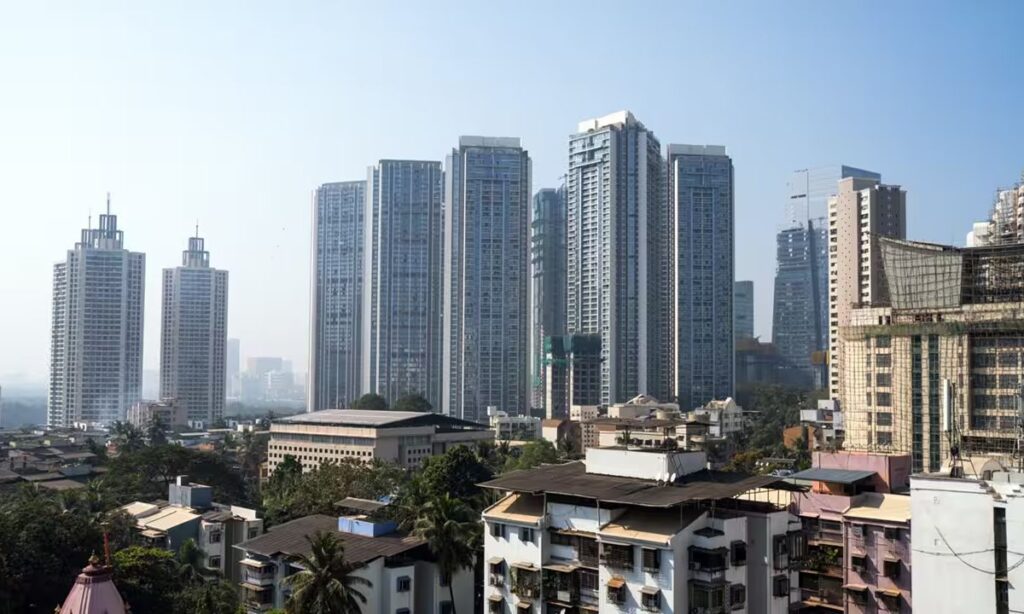India’s urban housing market is sounding alarm bells. Data from the National Housing Board (NHB) paints a startling picture—one where even the top 5% income earners in cities like Mumbai and Gurugram are finding it nearly impossible to purchase a home without making major financial compromises. In Mumbai, it could take a top earner over a century—109 years—to afford a modest home. Gurugram follows at 64 years, Bengaluru at 36, and Delhi at 35 years.
These numbers reflect a growing affordability crisis that’s not just impacting middle-class buyers—but even those in the highest income brackets. With rising property prices and stagnating income growth, the dream of homeownership is slipping out of reach in India’s top cities.

Why Are Homes So Unaffordable in Top Cities?
The Numbers Behind the Crisis
Abhishek Kumar, a SEBI-registered investment advisor and founder of SahajMoney, breaks it down with real numbers:
- Top 5% urban households in Maharashtra:
₹22,352 MPCE (monthly per capita consumption expenditure)
For a family of four = ₹89,408/month (~₹10.7 lakh annually) - Savings capacity: ~₹3.2 lakh/year (at India’s 30.2% savings rate)
- Mumbai home price (1,184 sq. ft. @ ₹30,000/sq. ft): ₹3.54 crore
- Years needed to save for the home: 109 years
“The mathematical calculation behind this claim is both accurate and alarming,” says Kumar.
EMI-to-Income Ratios: A Warning Sign
- Mumbai: 48% (highest)
- Gurugram, Delhi, Bengaluru: ~35–45%
- Ahmedabad: 18% (most affordable metro)
An EMI-to-income ratio over 40% is considered financially risky. Yet, in Mumbai, households are forced to allocate nearly half their income toward home loans—if they can qualify at all.
Is Homeownership Still Possible? Experts Say Yes, But With Compromises
1. Creative Financing Is Key
- Long-term loans (25–30 years)
- Joint loans with spouse or family
- Large down payments to reduce EMI burden
“Estimate not just your EMI but total upfront costs—down-payment, stamp duty, registration, furnishing. That’s your true affordability,” advises Animesh Hardia, SVP at 1 Finance.
2. Location and Size Trade-offs
- Consider city outskirts or emerging micro-markets
- Opt for smaller configurations or under-construction units
- Compromise on commute for cost savings
3. Shift in Mindset
- From ownership as a status symbol to a long-term asset
- Renting in the city, buying in Tier-2 or Tier-3 locations
The Smart Hybrid Model: Rent Where You Work, Buy Where It’s Affordable
With urban property prices skyrocketing, many professionals are choosing a hybrid approach:
- Rent in metro cities near work and lifestyle amenities
- Buy property in Tier-2 cities as a long-term investment or emotional asset
“Now, buying a home often requires compromise, creativity, and a shift in mindset. It’s still possible, but it’s no longer simple,” says Charu Pahuja, COO at Wise Finserv.
This model offers:
- Proximity to work and schools via renting
- Emotional security and wealth creation via owning in smaller cities
- Potential rental income from owned property
Quick Highlights Table
| City | Years to Buy Home (Top 5% Earners) | Avg. Price/sq.ft | EMI-to-Income Ratio |
|---|---|---|---|
| Mumbai | 109 years | ₹30,000 | 48% |
| Gurugram | 64 years | ₹15,000–18,000 | 40–45% |
| Delhi | 35 years | ₹13,000–15,000 | 35% |
| Bengaluru | 36 years | ₹12,000–14,000 | 34% |
| Ahmedabad | N/A (Most Affordable) | ₹4,000–6,000 | 18% |
FAQ: Understanding the Indian Housing Affordability Crisis
1. Why does it take 109 years to afford a home in Mumbai?
Because even the top 5% earners can only save ~₹3.2 lakh annually, while a standard home costs ₹3.54 crore. At that rate, it would take 109 years to save enough without loans.
2. Is it still possible to buy a home in Mumbai or Delhi?
Yes, but it often requires major trade-offs—such as joint loans, buying far from central areas, or settling for smaller units.
3. What is the EMI-to-income ratio and why does it matter?
It shows what portion of your income goes to EMI. A ratio above 40% is risky. Mumbai tops this list at 48%, which indicates poor affordability.
4. What is the hybrid model of renting and buying?
Rent in metro areas for convenience and lifestyle, and buy a home in a more affordable city for investment or emotional security.
5. Are Tier-2 cities better for homeownership?
Yes. They offer better value, lower prices, and growing infrastructure—making them more feasible for ownership, especially for long-term investment.
